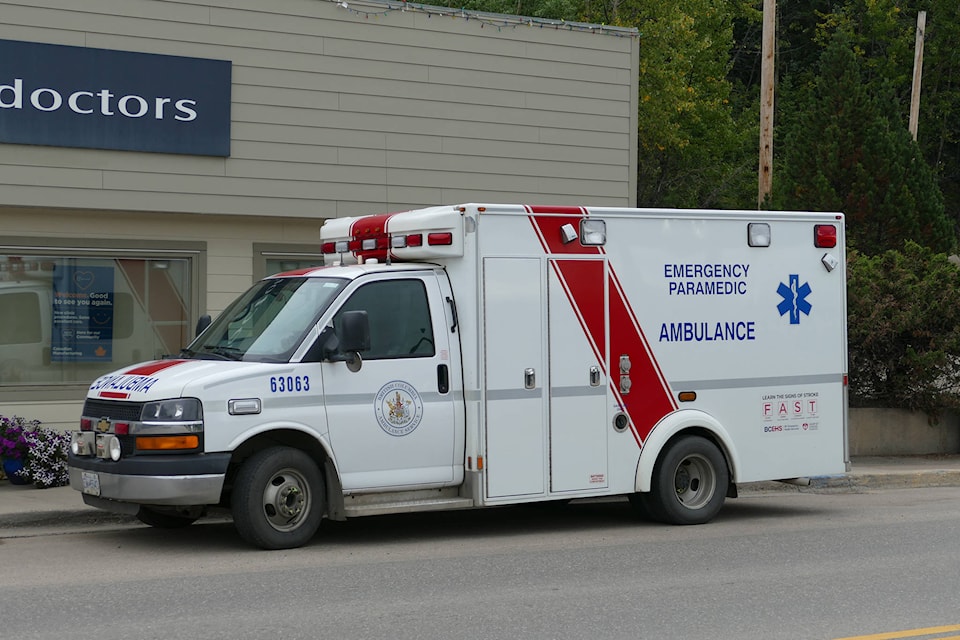The limited number of paramedics and vehicles, and the resource-sharing among the northern communities from those limited resources has been a long-standing issue in Northern BC. While the BC Emergency Health Services (BCEHS) is trying to make changes, need for additional support from the province has been reverberating throughout the northern region.
“A few months ago a senior in Smithers had to lie on the floor for an hour and a half waiting for an ambulance, because there was no one present in the town on call and someone else had to come down from �������� Lake. I just think it is completely unacceptable that for us, that is the level of service that we should expect. Over the years, there haven’t been enough resources to support the ambulances in rural communities and I think that needs to change,” said MLA John Rustad.
The problem that Rustad is talking about is of patient transfer. When a patient needs to be transported out of the community to a larger hospital that community is left with too few ambulances, and at times no paramedics available on call.
“BCEHS is a provincial service, which means communities share resources and we can respond where we are needed most. We draw upon ambulances and paramedics from nearby communities as needed.Whether a call is placed in �������� Lake, Houston or Hazelton, the closest available ambulance and paramedics are dispatched,” said Shannon Miller, the spokesperson for BCEHS.
To put things in perspective, each year Houston-based paramedics are called to about 100 patient transfers and �������� Lake has about 175 such calls, often leaving the community vulnerable during those times.
“If someone has a serious car accident, a heart attack or some other serious medical issue, minutes really matter. You can’t really wait an hour and half for an ambulance to show up. It just can’t be this way,” said Rustad.
Earlier this year, the Ministry of Health announced a framework outlining immediate actions to improve health-care services and better respond to the COVID-19 pandemic. As part of this, the BC Ambulances added 55 new vehicles to the fleet, six of which were allocated to the Northern Health region. Additional ambulances were added in Prince George, Terrace and Fort St. John and two additional air ambulance planes were added in Prince George and one air ambulance helicopter was also added.
Currently, the Nechako District resource allocation has Kitwanga with one ambulance and four paramedics, Hazelton with two ambulances and 17 paramedics, �������� Lake with three ambulances and 14 paramedics, Fraser Lake with two ambulances and 11 paramedics, Granisle with one ambulance and five paramedics, Houston with two ambulances and 11 paramedics, Smithers with one ambulance and 20 paramedics and Southside with one ambulance and eight paramedics.
While it is surprising to see some of the larger communities have lesser resources than the smaller communities, according to Miller, the decisions surrounding resource allocation depends upon the call volume rather than the size of the population. For example, the community of �������� Lake averages about 50 medical emergency calls a month, and Houston about 35 calls a month. In the last year, �������� Lake had around 625 9-1-1 calls and Houston had 415 such calls. These numbers are in addition to the yearly patient transfer calls.
“Sometimes these calls involve taking an ambulance out of a community. The nice thing about a provincial service is we can move around resources as and when we need. So when these instances do occur, our dispatch centre and our resources they work really close together to try and minimize any time,” said the Nechako District Patient Care Delivery Manager, Michael Lee. He also said that apart from the boost in resources from the province, the contract changes that were negotiated last year in September, will bring about some changes including converting some of the on-call shifts to permanent positions.
Last September, the paramedics, dispatchers and call-takers union, CUPE 873, ratified a new contract with the Health Employers Association of BC to implement a new service model. As part of the contract, 92 communities were identified as candidate communities for this change in work shifts and both, Station 753 �������� Lake and Station 767 Houston were identified as communities whose call-out shifts would be converted to permanent paramedic jobs. However, neither of the two communities are included on the first round of implementation of this new contract, which is set to happen over a period of three years.
“I think the challenge is always allocating enough resources. Up in the North, we generate a lot of resource revenue for the province and I don’t think it is too much to ask that we have a little extra money coming back to support emergency services, particularly for ambulances. I mean if we need to be able to have a better level of service. And that means there needs to be some more investment particularly in the Northern and rural communities,” said Rustad, adding that he will continue to advocate for the need for more resources and keep putting pressure on the province for that.
Priyanka Ketkar
Multimedia journalist
priyanka.ketkar@ldnews.net
Like us onand follows us on Twitter.



